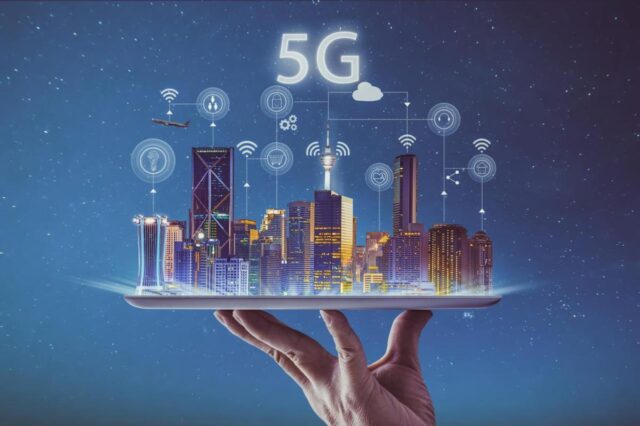The global rollout of 5G technology marks a turning point in how the world connects, communicates, and conducts business. As the fifth generation of wireless technology, 5G offers unprecedented speeds, ultra-low latency, and massive device connectivity — promising a future of seamless smart experiences, from self-driving cars to remote surgeries.
What is 5G and Why Does it Matter?
5G, short for fifth-generation mobile network, is the successor to 4G LTE. It delivers peak speeds of up to 10 Gbps — nearly 100 times faster than 4G. But 5G isn’t just about speed; it drastically reduces latency to under 1 millisecond, making real-time interactions smoother and more efficient.
With this improvement, 5G enables transformative applications across multiple industries, including healthcare, manufacturing, education, agriculture, and entertainment.
Real-World Applications of 5G
1. Healthcare and Telemedicine
5G supports remote diagnostics, real-time consultations, and even robotic-assisted surgeries. Hospitals can manage vast amounts of patient data and perform critical procedures without delay.
2. Smart Cities
From traffic lights that adapt to congestion to intelligent waste management systems, 5G fuels the infrastructure needed for efficient, data-driven urban living.
3. Industrial Automation
In manufacturing, 5G allows for wireless machine-to-machine communication, predictive maintenance, and autonomous robotics — all key features of Industry 4.0.
4. Augmented and Virtual Reality (AR/VR)
For education and entertainment, 5G provides lag-free AR/VR experiences. This has implications for online learning, virtual tourism, and even military training simulations.
5. Internet of Things (IoT)
5G enables billions of IoT devices — from smart refrigerators to connected cars — to communicate simultaneously, providing real-time data collection and insights.
The Economic Impact of 5G
According to a PwC report, 5G is projected to add over $1.3 trillion to global GDP by 2030. Emerging markets like Ghana, India, and Indonesia stand to benefit from improved internet access and new digital business models. Telecom companies are already investing heavily in infrastructure, creating new jobs in network engineering, cybersecurity, and tech support.
Challenges and Concerns
Despite its promise, 5G faces several hurdles:
- Infrastructure Costs: 5G requires a dense network of small cell towers, making deployment expensive in rural areas.
- Security Risks: With more connected devices, the attack surface for cyber threats widens.
- Health Concerns: Though studies show no conclusive health effects, public skepticism persists over radiation exposure.
- Digital Divide: Without proper policy, 5G could widen the gap between urban tech hubs and underserved regions.
The Future of 5G: Beyond Connectivity
Looking ahead, 5G will be a key enabler of:
- Autonomous Vehicles: Cars that communicate with each other and with infrastructure in real-time.
- Remote Work Evolution: Enhanced cloud access, holographic conferencing, and edge computing.
- Space Internet: Integrating 5G with satellite-based networks for truly global coverage.
Conclusion
5G is more than just the next upgrade in mobile connectivity — it’s the backbone of tomorrow’s digital economy. While challenges remain, the potential benefits to industries, governments, and individuals are enormous. As adoption increases and infrastructure expands, 5G is poised to redefine how we live, work, and connect.
Source: HotFmOnline.com
Do you have a story to share? Send it to our editorial team at editor@hotfmonline.com



